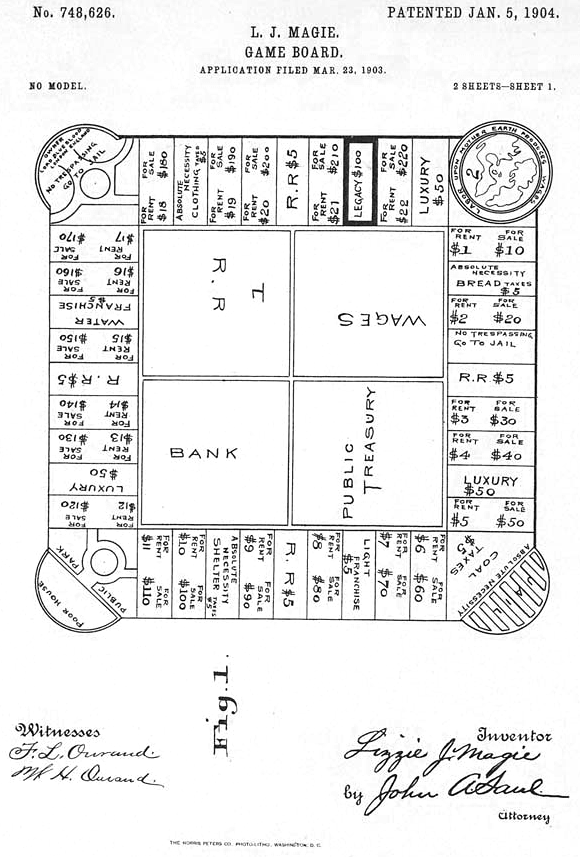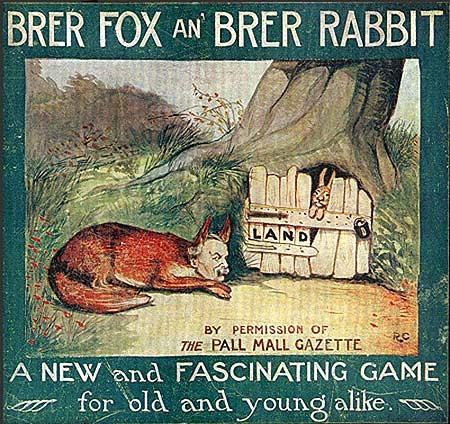The Bad Economics Behind “Monopoly” – Article by Chris Calton

In 1868, a young Henry George wrote an editorial on the nearly completed Pacific Railroad that was soon to connect his state of California with the rest of the country. This editorial, “What the Railroad Will Bring Us,” acknowledged the progress that railroads would signify in the industrializing economy of the Gilded Age, but George saw this as a boon only for the privileged few. Like many thinkers of his time, he was concerned with the “labor question,” which he referred to as one of “the riddles of a Sphinx, which not to answer is death.” Why was there poverty in an age of economic expansion?
Henry George believed that he figured out the riddle after a horseback ride in Oakland Hills, California. While stopping to give his horse a drink of water, George engaged in polite conversation with a farmer, casually asking the value of the land around him. The farmer told him of some land for sale nearby for $1,000 per acre. With this thought in mind, George concluded that land values would inevitably rise as the population grew, and speculators — that economic specter historians love to fear — could own land unproductively to profit merely off its natural increase in value. This, George decided, was the reason why there was poverty in a progressing economy.
In 1879, George published the book Progress and Poverty, formally laying out this conundrum and his answer to it. In it, he detailed for the first time his “Single Tax Plan” that proposed to tax land in proportion to its increase in value, which he believed would lead to the end of property rights in land entirely.
Apparently, George’s idea hit home with a lot of people at the time. His book outsold every book the year it was published except for the Bible, and a movement to form “Single Tax Clubs” spread throughout the country and beyond. Henry George became a Gilded Age rockstar.
Among his followers was a woman named Elizabeth Magie. She believed that George’s land value tax plan was the solution to economic woes, and she wanted to bring this idea to as many people as she could. To do this, she developed The Landlord’s Game. This board game intended to demonstrate the horrors of land accumulation and rent, and to illustrate the benefit of George’s Single Tax Plan.
The original game, patented in 1904, closely resembles the modern game of Monopoly, that would later evolve out of it. Players started in a square that said “Labor Upon Mother Earth Produces Wages.” As the original rules state, “Each time a player goes around the board he is supposed to have performed so much labor upon Mother Earth, for which after passing the beginning-point he receives his wages, one hundred dollars, and is checked upon the tally-sheet as having been around once.”
Most of the squares look at least somewhat familiar. Many gave sale prices and rent costs, not unlike modern monopoly. This was explicitly meant to illustrate the belief that land rent transactions were involuntary, a notion that Benjamin Powell has already addressed. The railroads are also present, representing “transportation, and when a player stops upon one of these spaces he must pay five dollars to the ‘R.R.’” Less familiar squares demonstrated the horrors of private property rights by saying “No Trespassing. Go to Jail” from which the more ambiguous “Go Directly to Jail” corner would evolve in the modern game.
In 1913, a version of the game was picked up in Britain called Brer Fox an’ Brer Rabbit, taking the name from the African fables of Brother Fox and Brother Rabbit (the native language of African slaves lacked the diphthong syllable, so the word “brother” was pronounced “br’er” when told in English). In this, the clever Br’er Rabbit represented the wily landowner earning his immoral rents. The pesky Br’er Fox was meant to represent British reform leader David Lloyd George, who was of no relation to Henry George but was a strong supporter of his land value tax. In 1909, Lloyd George came up with the “People’s Budget” which instituted a version of Henry George’s land tax and planted the seeds for the British welfare state. His face is imposed on the figure of Br’er Fox on the original cover for the British game.
This version of the game was actually used to educate students about Henry George’s ideas in places like the University of Pennsylvania and Columbia. The Landlord’s Game and its British variant attempted to teach people the socialistic concepts that wages come from land, private property in land was immoral and destructive, and the economy is a zero-sum environment. The game evolved over time into the modern version Monopoly, whose invention is falsely credited to Charles Darrow.
Today, of course, the specifically Georgist elements have been removed from the game. There are no longer any “No Trespassing” squares, and what once was known as “The Poor House” where bankrupt players were forced to go upon running out of money is now the “Free Parking” square. The several “Absolute Necessity Taxes” across the board (perhaps the one aspect of the game’s educational commentary that libertarians could agree with) have been reduced to the Luxury and Income Tax squares. And of course, the unambiguously socialistic “Mother Earth” starting square became simply “Go.” Nonetheless, the modern variant retains the zero-sum myths of monopoly land accumulation, and in this, the legacy of Henry George is retained. If you’ve ever finished a game of monopoly with a frustrated player overturning the board and scattering the pieces, then it’s possible that Lizzie Magie accomplished her original goal.
Chris Calton is a Mises University alumnus and an economic historian. See his YouTube channel here.
This article was published on Mises.org and may be freely distributed, subject to a Creative Commons Attribution United States License, which requires that credit be given to the author.

